What is colorectal cancer

What is colorectal cancer? One of the leading cancer-related fatalities is due to colorectal cancer, which ranks second on the list of cancer-causing deaths worldwide. Over 1.9 million new cases and 930,000 deaths were recorded in 2020 due to colorectal cancer. The number of cases being reported is rapidly increasing. But what is colorectal cancer? What are the causes? Why is it so common? Let’s find out. What is colorectal cancer? Colorectal cancer, also called bowel cancer, is a type of cancer that originates in the colon or rectum, which are parts of the digestive system. The colon, known as the large intestine, is the last part of the digestive tract, while the rectum is a lower part of the colon that connects to the anus. Colorectal cancer usually starts as small growths called polyps on the inner lining of the colon or rectum. With time, some of these polyps may turn into cancer, especially if they are not found and removed early. Recent posts Cervical Cancer: Causes, Symptoms, Screening, Prevention and Treatment Cervical Cancer: Causes, Symptoms, Screening, Prevention and Treatment Cervical Cancer: Causes, Symptoms, Screening, Prevention and Treatment Cervical cancer is a significant health concern worldwide, affecting millions of women each year. … Hodgkin Lymphoma: Symptoms, Causes, Risk Factors and Prevention Hodgkin Lymphoma: Symptoms, Causes, Risk Factors and Prevention Hodgkin Lymphoma: Symptoms, Causes, Risk Factors and Prevention Hodgkin lymphoma, a cancer affecting the lymphatic system, is a condition that deeply impacts … 1 2 3 … 5 Next » What are the symptoms of colorectal cancer? Colorectal cancer symptoms can be subtle, often resembling common digestive issues. However, recognizing these signs is crucial for early detection and treatment. Colorectal cancer symptoms are: Changes in bowel habits such as diarrhea, constipation or narrowing of the stool Rectal bleeding, either bright red or dark and tar-like Abdominal discomfort, characterized by cramps, pain or bloating Unexplained weight loss Fatigue and weakness, even with adequate rest Iron deficiency anemia due to chronic bleeding leads to fatigue, weakness and paleness Did you know colorectal cancer is often called the “silent killer” because it can develop without symptoms in its early stages? Don’t wait; schedule your screening with an expert today. What are the causes and risk factors for colorectal cancer? Colorectal cancer, being a multi-etiological disease with complex etiology, follows from a mixture of genetic predispositions and environmental factors. While the exact cause remains unknown, a multifactorial etiology has been established to predispose to colorectal cancer. Genetic and environmental influence: Genetic Factors: Genetic alterations and inherited syndromes play a very crucial role in the etiology of colorectal cancer. About 10% of cases result from inherited genetic syndromes, such as Lynch syndrome and familial adenomatous polyposis, which cause colorectal cancer susceptibility. Environmental Factors: Environmental exposures and lifestyle choices also affect the incidence of colorectal cancer. These risk factors include diet, physical activity, tobacco use and alcohol consumption, which may contribute to the development of the disease. Common Risk Factors: Age: Colorectal cancer risk increases as an individual ages and a majority of the cases are diagnosed in individuals over 50 years old. However, recent trends indicate that there is an increase in incidence rates among younger age groups. Therefore, this presents an opportunity for heightened awareness and screening among all age groups. Family History: People with a family history of colorectal cancer or certain genetic syndromes have an increased risk of developing the disease. People whose first-degree relatives had colorectal cancer should undergo an earlier and more frequent rate of screening. Personal Medical History: A history of colon cancer or specific kinds of polyps places the individual at an increased risk of developing the disease. Secondly, inflammatory bowel diseases, ulcerative colitis, Crohn’s disease and other medical histories linked to long-standing and active involvement of these diseases are associated with an increased risk of developing colorectal cancer. Lifestyle Choices: Modifiable lifestyle choices like poor diets, processed meats, low fruit and vegetable intake, a lack of physical activity, obesity, smoking and a higher intake of alcohol are risk factors associated with colorectal cancer. The best approach to controlling such risk factors by altering lifestyle habits is to embrace a healthy lifestyle characterized by regular physical activity and a balanced diet that is high in fiber and nutrients. Survival Rates and Prognosis Healthcare providers worldwide have made great strides in the treatment of colon cancer. Based on information from sources including national cancer institutes, more than 90 percent of individuals diagnosed with early-stage colorectal cancer survive five years following diagnosis. Survival rates can vary widely based on factors, but, overall, about 65 percent of all colorectal cancer patients can survive five years after diagnosis. Emergency Care and Seeking Help It’s very important to understand when emergency care should be sought by an individual undergoing colon cancer treatment. Severe side effects, such as high fever, persistent chills, abdominal pain or dehydration, may be an indication to seek an immediate visit to healthcare providers. Increased awareness and screening efforts have led to more cases of colon cancer being detected and treated prior to the appearance of symptoms and the progression of the disease. Recent advances in targeted treatments have benefited individuals with colon cancer and further enhanced their outcomes. Active discussions with healthcare providers regarding treatment options and continuous education about new therapies will further support good outcomes and quality of life for colon cancer victims. References: https://my.clevelandclinic.org/health/diseases/14501-colorectal-colon https://www.mayoclinic.org/diseases-conditions/colon-cancer https://www.cdc.gov/cancer/colorectal/basic_info/what-is-colorectal https://www.cancer.org/cancer/types/colon-rectal-cancer/about/ Dr. A. Venugopal HOD, Senior Consultant Medical Oncologist and Hemato Oncologist View Profile About Author Dr. A. Venugopal MD (General Medicine), DM (Medical Oncology), MRCP – SCE Medical Oncology (UK), ECMO (Switzerland). Dr A. Venugopal is One of the best medical oncologist and Hemato Oncologist in hyderabad, currently serving as the Head of the Department and Senior Medical Oncologist, Hemato Oncologist at Pi Health Cancer Hospital in Gachibowli, Hyderabad. He brings over 15 years of extensive experience in the field of Oncology. Book an Appointment
Adrenal Tumors
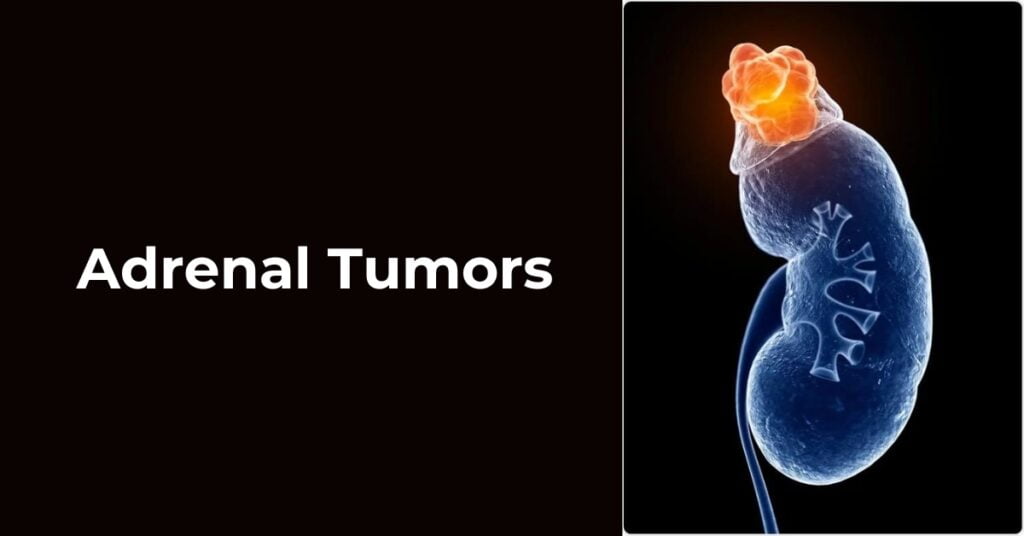
What Are Adrenal Tumors? Did you know some tumors hide near the kidneys and can worsen at an alarming rate? We are talking about adrenal tumors. Adrenal tumors can be benign or malignant. These are known to disrupt hormonal balance, in turn ruining the normal functioning of the body. It is located on the upper part of the kidney and plays an important role in the endocrine system. It is involved in releasing hormones that regulate the functioning of the body, such as metabolism, stress response, and regulation of blood pressure. What are adrenal glands? Adrenal glands are two small, triangular in shape, each about half an inch high and three inches long, sitting on the upper region of your kidneys like tiny caps. These adrenal glands have two distinct parts: the medulla and the cortex. The inner part of the adrenal gland, also known as medulla secretes catecholamines similar to adrenaline and noradrenaline. These are known as stress hormones, which respond during emergencies to increase alertness, heart rate, and blood pressure in order to prepare the body for action. Whereas the outer part of the adrenal gland, also known as the cortex, produces hormones that regulate blood pressure, metabolism and the utilization of fats, carbohydrates, and proteins. Related posts World Lung Cancer Day 2024: Raising Awareness and Inspiring Action World Lung Cancer Day 2024: Raising Awareness and Inspiring Action World Lung Cancer Day 2024: Raising Awareness and Inspiring Action Every year on August 1st, the global community comes together to recognize … Understanding Fever: When to Act and How to Manage Understanding Fever: When to Act and How to Manage Understanding Fever: When to Act and How to Manage Fever is a common physiological response of the body to various internal and … 1 2 3 … 5 Next » What are the symptoms of adrenal tumors? Symptoms of adrenal tumors can vary depending on whether the tumor is functioning (producing hormones) or non-functioning. Here are some common symptoms: Functioning Tumors: Depending on the type of hormone overproduced by the tumor, symptoms may include: Cushing’s syndrome: Weight gain, especially around the midsection and upper back, thinning of the skin, easy bruising, muscle weakness, high blood pressure, and diabetes. Hyperaldosteronism: High blood pressure, low potassium levels, muscle weakness, and frequent urination. Virilization: In women, this can cause excessive facial and body hair growth, deepening of the voice, and irregular menstrual periods. Feminization: In men, this can cause breast enlargement (gynecomastia) and loss of libido. Non-Functioning Tumors: Abdominal or Back Pain: Pain in the abdomen or back, often on the side where the tumor is located. Feeling of Fullness: Due to the tumor pressing on nearby organs, such as the kidneys or intestines. Unintended Weight Loss: Without dieting or lifestyle changes. Fatigue: Feeling tired or weak, even with adequate rest. Changes in Urination: Increased frequency or urgency, or blood in the urine. Symptoms of adrenal tumors can vary depending on whether the tumor is functioning (producing hormones) or non-functioning. Here are some common symptoms: Functioning Tumors: Depending on the type of hormone overproduced by the tumor, symptoms may include: Cushing’s syndrome: Weight gain, especially around the midsection and upper back, thinning of the skin, easy bruising, muscle weakness, high blood pressure, and diabetes. Hyperaldosteronism: High blood pressure, low potassium levels, muscle weakness, and frequent urination. Virilization: In women, this can cause excessive facial and body hair growth, deepening of the voice, and irregular menstrual periods. Feminization: In men, this can cause breast enlargement (gynecomastia) and loss of libido. Non-Functioning Tumors: Abdominal or Back Pain: Pain in the abdomen or back, often on the side where the tumor is located. Feeling of Fullness: Due to the tumor pressing on nearby organs, such as the kidneys or intestines. Unintended Weight Loss: Without dieting or lifestyle changes. Fatigue: Feeling tired or weak, even with adequate rest. Changes in Urination: Increased frequency or urgency, or blood in the urine. Other Symptoms may include nausea, vomiting, fever, or unexplained sweating. Adrenal tumors can be the reason why your bodily functions are acting weird lately. Visit an expert and get screened today. What causes adrenal tumors? The exact causes of adrenal tumors are not always clear, but several factors may contribute to their development. Here are some potential causes: Genetic Factors: In some cases, adrenal tumors can be caused by inherited genetic mutations that predispose individuals to develop these growths. Conditions such as Li-Fraumeni syndrome, multiple endocrine neoplasia (MEN), and von Hippel-Lindau disease are associated with an increased risk of adrenal tumors. Chronic Sun Exposure: Prolonged exposure to ultraviolet (UV) radiation from sunlight has been linked to the development of certain adrenal tumors, particularly adrenocortical carcinomas. Radiation Therapy: Previous radiation therapy to the abdomen or pelvis, often used to treat other cancers or medical conditions, may increase the risk of developing adrenal tumors later in life. Unknown Factors: In many cases, the exact cause of adrenal tumors remains unknown. Some tumors may develop spontaneously due to random genetic mutations or other factors that are not yet fully understood. Not everyone with these risk factors will develop adrenal tumors, and some individuals may develop these tumors without any identifiable risk factors. How are adrenal tumors diagnosed? The diagnosis of adrenal tumors depends on the type and stage of the tumors. Some of the diagnostic methods are: Medical History and Physical Examination: The doctor thoroughly reviews the patient’s medical history and a physical examination is done to find the symptoms or signs of adrenal abnormalities, such as palpable masses or changes in blood pressure. Blood and Urine Tests: To check the hormonal levels in the body, blood and urine tests are done. Findings like elevated levels of cortisol may indicate Cushing’s syndrome, and excess aldosterone may indicate aldosteronism. Imaging Studies: Imaging tests like computed tomography (CT) scans, magnetic resonance imaging (MRI), and positron emission tomography (PET) scans are done to determine the size, location and characteristics of the tumor. Biopsy: It involves using a thin needle to extract
Brain Tumors: Exploring Types, Symptoms, Diagnosis, and Treatments
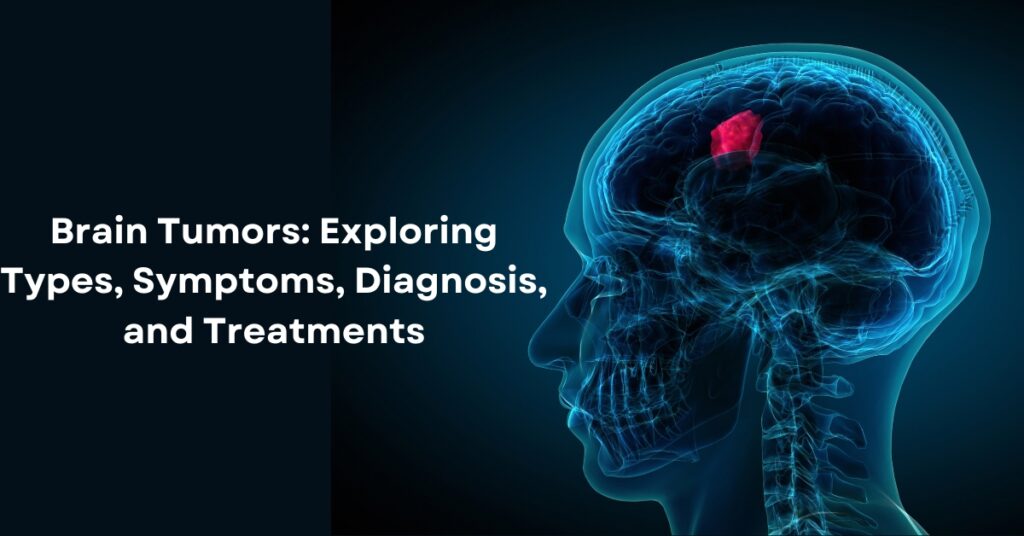
Brain Tumors: Exploring Types, Symptoms, Diagnosis, and Treatments The brain is the control room of the human body. What happens when it faces glitches? Hard to imagine, right? Every organ of the human body is susceptible to damage, including the brain. Brain tumors are a common abnormality that hinders the healthy functioning of the brain. Let’s learn more about these. Brain tumors are abnormal growths of cells in the brain, a complex organ responsible for various nervous system functions. They can occur in any part of the brain or skull, including its protective lining, the brainstem, sinuses, nasal cavity, and others. Over 120 different types of brain tumors are known to arise from different tissues in the brain. What are the different types of brain tumors? Brain tumors arise in different stages, each with unique origins and characteristics: Gliomas: These tumors originate from glial cells, which provide support and protection to the nervous system of the brain. Gliomas include astrocytomas, oligodendrogliomas, and ependymomas. Meningiomas: Found in the lining that protects the brain and spinal cord, meningiomas typically begin as benign and progress slowly. Pituitary adenomas: These tumors develop in the pituitary gland, a small gland at the base of the brain. They can disrupt hormone production and function. Medulloblastoma: Primarily occurring in children, this brain tumor interferes with movement and balance. Schwannomas (or acoustic neuromas): Derived from Schwann cells, which provide a myelin sheath over nerve fibers, these tumors often affect nerve perception related to hearing and balance. Craniopharyngiomas: This tumor arises near the pituitary gland and can disrupt hormone balance, vision, and other functions. Pineal gland tumors: These tumors of the pineal gland can interfere with the sleep-wake cycle. Germ Cell Tumors: Originating from germ cells that develop into sperm and eggs, these tumors arise in various areas of the brain, including the pineal and pituitary glands. These are just a few examples of brain tumors, each with unique symptoms and often requiring different treatment modalities. Recent posts Cervical Cancer: Causes, Symptoms, Screening, Prevention and Treatment Cervical Cancer: Causes, Symptoms, Screening, Prevention and Treatment Cervical Cancer: Causes, Symptoms, Screening, Prevention and Treatment Cervical cancer is a significant health concern worldwide, affecting millions of women each year. … Hodgkin Lymphoma: Symptoms, Causes, Risk Factors and Prevention Hodgkin Lymphoma: Symptoms, Causes, Risk Factors and Prevention Hodgkin Lymphoma: Symptoms, Causes, Risk Factors and Prevention Hodgkin lymphoma, a cancer affecting the lymphatic system, is a condition that deeply impacts … 1 2 3 … 5 Next » What are the symptoms of brain tumors? The symptoms of brain tumors are dependent on various factors, including their location, size, and growth rate. As a result, it has the tendency to disrupt the functions of affected parts of the brain. When the cerebellum has tumors, it causes abnormalities in movements, coordination, and balancing activities. On the other hand, tumors near the optic pathway can cause visual disturbances. However, common symptoms that appear before the diagnosis of the tumor are: Headaches Seizures Cognitive difficulties Changes in personality (mood swings or alterations in behavior) Weakness or paralysis Balance issues or dizziness Visual disturbances (blurred vision or double vision) Hearing problems Numbness or tingling sensations Nausea or vomiting Confusion and disorientation How are brain tumors diagnosed? Diagnosis of a brain tumor involves a comprehensive physical examination, including brain imaging studies like MRI, CT scans, and biopsy if possible. Other tests like lumbar punctures and evoked potential studies, which can be used to confirm the diagnosis and to see the characteristics of the tumor, would be done. Accurate diagnosis is important for developing individualized treatment plans and to effectively prognosticate patient outcomes How are brain tumors treated? Even though brain tumors are treated with a thorough approach, taking care of each patient individually based on his or her unique situation is a major aspect of modern medicine. The combination of the most recent medical technologies with treatment methods makes it possible to offer a wide range of options compatible with individual needs. Surgery: Surgeons aim to extract as much of the tumor as possible while sparing the functions of the brain. High-precision tools, including imaging and navigation, are used by surgeons to accurately locate and remove the tumor with minimal damage to healthy tissue. Radiation Therapy: This type of therapy uses high-energy beams to pinpoint and shrink the size of the tumors. It can be delivered externally or by inserting radioactive material directly into the tumor. Chemotherapy: Medications kill tumor cells or slow their growth. The medications can be taken by mouth or injection and work by targeting fast-growing cells, like those found in tumors. Immunotherapy: This treatment utilizes the human body’s immune system to fight against tumor cells. By enhancing the body’s natural defenses, immunotherapy offers the hope of long-term control of the disease. Targeted Therapy: Targeted treatments focus on specific molecules that drive the growth of a tumor. By blocking these molecules, targeted therapies are able to slow or stop the growth of a tumor with fewer side effects compared to traditional chemotherapy. Watchful Waiting (Active Surveillance): Sometimes, the best strategy is to closely monitor the tumor over time. This way, doctors can intervene if the tumor changes but avoid unnecessary treatments and their possible risks. Symptom Management: Symptomatic management and improvement in quality of life should be ensured throughout the treatment process. Techniques like the placement of shunts to relieve pressure in the brain, medications to control seizures or pain, and support services for emotional well-being all play a crucial role in the treatment process. Management of brain tumors requires a team effort—doctors, nurses, and specialists must work together to provide the best care for the patient. By combining different methods of treatment and approaches, healthcare teams can offer comprehensive care that addresses both the physical and emotional needs of patients. Did you know non-cancerous brain tumors can become cancerous over time?Meet our experts for regular screenings to eliminate doubts. What are the differences between brain tumors and lesions? A brain tumor is a specific
Acute Myeloid Leukemia (AML)
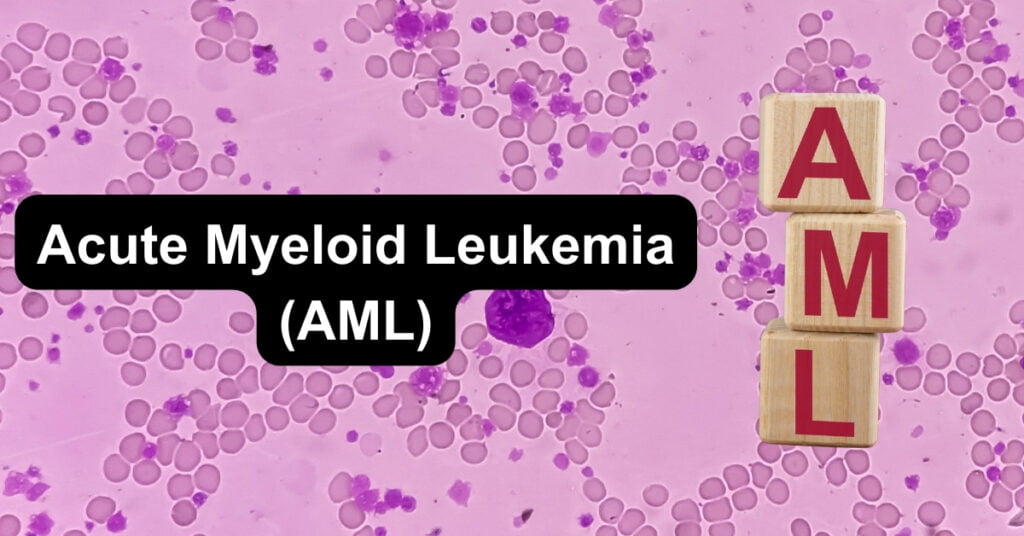
Acute Myeloid Leukemia (AML) AML, a type of cancer, occurs when cells in a specific body area start proliferating uncontrollably. This condition encompasses various cancer types, with cells in almost any body part susceptible to becoming cancerous. Leukemias, a type of cancer, originate from cells that would typically mature into different blood cell types. While most leukemias originate from early forms of white blood cells, some begin in other blood cell types. Leukemias are categorized primarily by their pace of growth (acute or chronic) and whether they originate from myeloid or lymphoid cells. Acute myeloid leukemia (AML) originates in the bone marrow, where new blood cells are formed, and often quickly spreads into the bloodstream. It may also spread to other body parts like the lymph nodes, liver, spleen, central nervous system, and testicles. It is known by various names like acute myelocytic leukemia, acute myelogenous leukemia, acute granulocytic leukemia, and acute non-lymphocytic leukemia. Acute Myeloid Leukemia (AML) Symptoms Early-stage AML symptoms often resemble those of the flu or other common illnesses. They may include: Fever bone pain Fatigue Shortness of breath pale skin frequent infections easy bruising unusual bleeding (nosebleeds or bleeding gums) Recent posts Cervical Cancer: Causes, Symptoms, Screening, Prevention and Treatment Cervical Cancer: Causes, Symptoms, Screening, Prevention and Treatment Cervical Cancer: Causes, Symptoms, Screening, Prevention and Treatment Cervical cancer is a significant health concern worldwide, affecting millions of women each year. … Hodgkin Lymphoma: Symptoms, Causes, Risk Factors and Prevention Hodgkin Lymphoma: Symptoms, Causes, Risk Factors and Prevention Hodgkin Lymphoma: Symptoms, Causes, Risk Factors and Prevention Hodgkin lymphoma, a cancer affecting the lymphatic system, is a condition that deeply impacts … 1 2 3 … 5 Next » Acute Myeloid Leukemia (AML) Causes While the exact cause of DNA mutations leading to AML is unclear, certain risk factors increase susceptibility: Advancing age, with AML more common in adults over 65. Gender, as men are more prone to AML than women. Previous cancer treatments, particularly chemotherapy and radiation therapy. Exposure to high levels of radiation or hazardous chemicals like benzene. Smoking, which is linked to AML due to the presence of cancer-causing chemicals in cigarette smoke. Pre-existing blood disorders like myelodysplasia. Genetic disorders such as Down syndrome. Many individuals with AML exhibit no identifiable risk factors, while some with risk factors may never develop the disease. Did you know AML symptoms worsen within weeks? Don’t delay, seek expert help now. Acute Myeloid Leukemia (AML) Diagnosis To diagnose AML, several tests and procedures are conducted, including: Complete blood count (CBC) to check blood cell levels. Peripheral blood smear to examine blood cell characteristics. Flow cytometry is used to analyze the properties of cells. Bone marrow aspiration and biopsy to examine bone marrow, blood, and bone samples. Tumor biopsy to collect tissue samples from suspected tumors. Cytogenetic analysis is used to detect chromosomal abnormalities. Molecular testing is used to assess genetic mutations or changes. Immunophenotyping is used to identify cancer cells based on surface markers. Reverse transcription-polymerase chain reaction test (RT-PCR) to measure genetic material levels. Acute Myeloid Leukemia (AML) Treatment Options Treatment for AML involves multiple modalities and typically occurs in two phases, which include induction therapy to achieve remission and post-remission therapy to prevent relapse. Supportive care is crucial to managing treatment side effects. Treatment options include: Chemotherapy, either systemic or intrathecal. Radiation therapy, particularly for CNS involvement or as part of total-body irradiation. Chemotherapy uses stem cell transplants to replace damaged blood-forming cells. Targeted therapy aimed at specific cancer cells. Other drug therapies, like arsenic trioxide and all-trans retinoic acid. Stages of AML AML typically progresses through stages: Early-stage AML: Characterized by mild symptoms or asymptomatic. Intermediate-stage AML: Symptoms may worsen, and cancer spread may occur. Advanced-stage AML: Severe symptoms and widespread cancer spread, potentially affecting various body organs and systems. Acute Myeloid Leukemia (AML) Prognosis Prognostic factors influencing AML outcomes include: Age at diagnosis Overall health status Cytogenetic abnormalities Molecular mutations Response to induction therapy Minimal residual disease levels Post-remission therapy outcomes AML prognosis is generally less favorable in older adults, those with adverse cytogenetics, and individuals with treatment-resistant disease. AML Complications AML complications arise from cancer growth, treatment side effects, or other factors. Common complications include: Anemia: Reduced red blood cell count leading to fatigue and weakness. Thrombocytopenia: Low platelet count causing bleeding and bruising. Neutropenia: Decreased white blood cell count increasing infection risk. Febrile neutropenia: Fever associated with a low white blood cell count. Infections: Opportunistic infections due to compromised immune function. Bleeding: Excessive bleeding due to a low platelet count. Organ dysfunction: Liver, kidney, or heart dysfunction due to cancer spread or treatment toxicity. Secondary cancers: Development of other cancers due to previous treatment. Emotional and psychological effects: Anxiety, depression, or distress due to cancer diagnosis and treatment. Financial burden: High treatment costs and reduced productivity are impacting finances. Acute Myeloid Leukemia (AML) Prevention Prevention strategies for AML primarily focus on minimizing exposure to known risk factors like radiation, hazardous chemicals, and smoking. Early detection and treatment of pre-existing blood disorders may reduce the risk of AML. Routine medical check-ups and cancer screenings facilitate early diagnosis and timely intervention. In summary, it’s crucial to highlight the vital role of heightened awareness, early detection, and access to comprehensive care in effectively managing Acute Myeloid Leukemia (AML) and ultimately improving patient outcomes. By educating both healthcare professionals and the public about the signs, symptoms, and risk factors of AML, individuals can better recognize warning signs and seek prompt medical attention. References: https://www.cancer.gov/types/leukemia/patient/adult-aml-treatment-pdq https://www.mayoclinic.org/diseases-conditions/acute-myelogenous https://www.cancer.org/cancer/types/acute-myeloid-leukemia Dr. A. Venugopal Clinical Director & HOD, Senior Consultant Medical Oncologist and Hemato Oncologist View Profile About Author Dr. A. Venugopal MD (General Medicine), DM (Medical Oncology), MRCP – SCE Medical Oncology (UK), ECMO (Switzerland). Dr A. Venugopal is One of the best medical oncologist and Hemato Oncologist in hyderabad, currently serving as the Head of the Department and Senior Medical Oncologist, Hemato Oncologist at Pi Health Cancer Hospital in Gachibowli, Hyderabad. He brings over 15 years of extensive experience
Kidney Cancer Treatment and Diagnosis
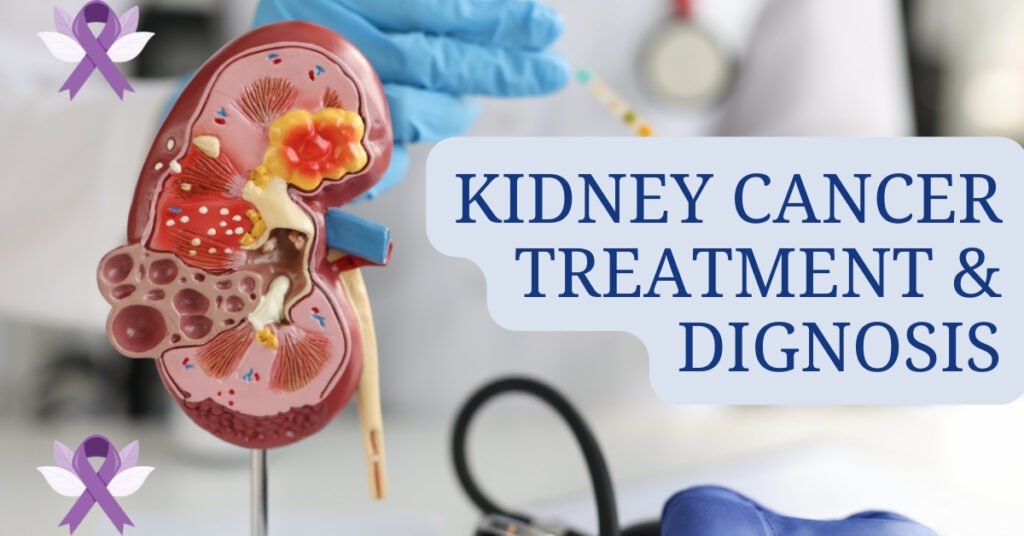
Kidney Cancer Treatment and Diagnosis Cancer, characterized by the uncontrollable growth of abnormal cells, can occur in various parts of the body. When it originates in the kidney, it’s termed as kidney cancer, which can pose a serious threat if not detected early. Recognizable symptoms, including blood in the urine, persistent back or side pain, fatigue, unexplained weight loss, fever, and abdominal lump, can escalate over time. Regular screenings are crucial to mitigate uncertainty surrounding kidney cancer diagnosis and progression. Let’s delve deeper into understanding the diagnosis and treatment options for kidney cancer. Kidney Cancer Diagnosis: Determining the presence and severity of kidney cancer relies on multiple factors, such as the symptoms experienced by the patient, results of diagnostic tests like blood and urine tests, imaging scans such as CT scans, MRI, and ultrasound, and sometimes, a biopsy to confirm the diagnosis. Despite these considerations, healthcare professionals employ a range of diagnostic tools and techniques to accurately identify kidney cancer in its early stages, which is crucial for effective treatment. Blood and urine tests: Blood tests: Evaluation of kidney function through measurements of creatinine and blood urea nitrogen (BUN). Urine tests: Detection of abnormalities such as hematuria (blood in the urine), a common symptom of kidney cancer. Imaging tests: CT scans: Cross-sectional imaging technique used to create detailed images of the kidneys and surrounding structures. MRI (Magnetic Resonance Imaging): Imaging technique that uses magnetic fields and radio waves to produce high-resolution images of the kidneys, helping identify masses or lesions. Ultrasound: Real-time imaging technique using sound waves to generate images of the kidneys, providing information about size, shape, and any suspicious areas. Biopsy: Procedure involving the insertion of a small needle into the kidney to collect tissue samples. Then examining the tissue samples under a microscope to confirm the presence of kidney cancer and determine its specific characteristics. Recent posts Cervical Cancer: Causes, Symptoms, Screening, Prevention and Treatment Cervical Cancer: Causes, Symptoms, Screening, Prevention and Treatment Cervical Cancer: Causes, Symptoms, Screening, Prevention and Treatment Cervical cancer is a significant health concern worldwide, affecting millions of women each year. … Hodgkin Lymphoma: Symptoms, Causes, Risk Factors and Prevention Hodgkin Lymphoma: Symptoms, Causes, Risk Factors and Prevention Hodgkin Lymphoma: Symptoms, Causes, Risk Factors and Prevention Hodgkin lymphoma, a cancer affecting the lymphatic system, is a condition that deeply impacts … 1 2 3 … 5 Next » What are the stages of kidney cancer? The prognosis depends on one’s general health, as well as the grade and stage of the kidney cancer. Below mentioned are the stages of kidney cancer. The higher the stage, the more advanced the cancer. Stage I: At this stage, the tumor is relatively small, measuring 7 centimeters or less, and it remains localized within the kidney. Stage II: The tumor has grown larger than 7 centimeters, but it still hasn’t ventured beyond the confines of the kidney. Stage III: This is where things start to get serious. The tumor has infiltrated nearby lymph nodes or blood vessels, or it may have penetrated the fatty tissue surrounding the kidney. However, it hasn’t breached the adrenal gland or surpassed Gerota’s fascia. Stage IV: Unfortunately, the cancer has now spread beyond the kidney’s boundaries. It could have invaded neighboring lymph nodes or metastasized to other organs like the bowel, pancreas, or lungs. Additionally, it has broken through Gerota’s fascia, possibly even involving the adrenal gland. Tough times indeed. Don’t wait for symptoms to appear – discuss kidney cancer screening with your healthcare provider to catch it early. Can kidney cancer be treated? The chance of curing kidney cancer depends on various factors, including the stage at which it’s detected, the age and overall health of the patient, any existing medical conditions they may have, their genetic makeup, and even lifestyle factors like smoking habits and diet. Despite these complexities, there are treatment methods that have shown effectiveness in treating kidney cancer. These treatments include: Surgery: Surgery stands as the cornerstone of kidney cancer treatment, serving as the primary method to remove cancerous tissue. It typically involves either partial or radical nephrectomy, depending on the extent of the disease. Partial nephrectomy: During partial nephrectomy, only the tumor and a portion of surrounding healthy tissue are removed, preserving as much kidney function as possible. Radical nephrectomy: This method involves the complete removal of the affected kidney, sometimes along with nearby lymph nodes and adrenal glands if required. Surgeons may opt for minimally invasive techniques, such as laparoscopy, to reduce recovery time and minimize scarring. Ablation Therapies: Ablation therapies offer alternative treatment options for kidney cancer, particularly for individuals who are not suitable candidates for surgery or those with small tumors. These therapies utilize either radiofrequency ablation (RFA) or cryoablation to destroy cancerous tissue. Radiofrequency Ablation(RFA): In RFA, high-frequency electrical currents generate heat, which effectively kills cancer cells. Cryoablation: This method involves freezing the tumor, causing ice crystals to form within the cells and leading to their destruction. Both methods are typically performed under imaging guidance to ensure precise targeting of the tumor while minimizing damage to surrounding healthy tissue. Targeted Therapy: Targeted therapy represents a significant advancement in kidney cancer treatment, offering medications designed to specifically target molecules or pathways involved in cancer cell growth and survival. By interfering with these specific targets, targeted therapy drugs can impede the progression of the disease and reduce tumor size. Unlike traditional chemotherapy, which affects both cancerous and healthy cells, targeted therapy tends to have fewer side effects and is often better tolerated by patients. Common targeted therapy drugs for kidney cancer include tyrosine kinase inhibitors (TKIs) and mTOR inhibitors, which have demonstrated efficacy in slowing disease progression and improving patient outcomes. Immunotherapy: Immunotherapy harnesses the power of the body’s immune system to combat kidney cancer. These treatments work by stimulating the immune system to recognize and attack cancer cells more effectively. One type of immunotherapy commonly used for kidney cancer is checkpoint inhibitors, which block inhibitory pathways that cancer cells exploit to evade
Kidney Cancer – Symptoms, Types and Risk factors
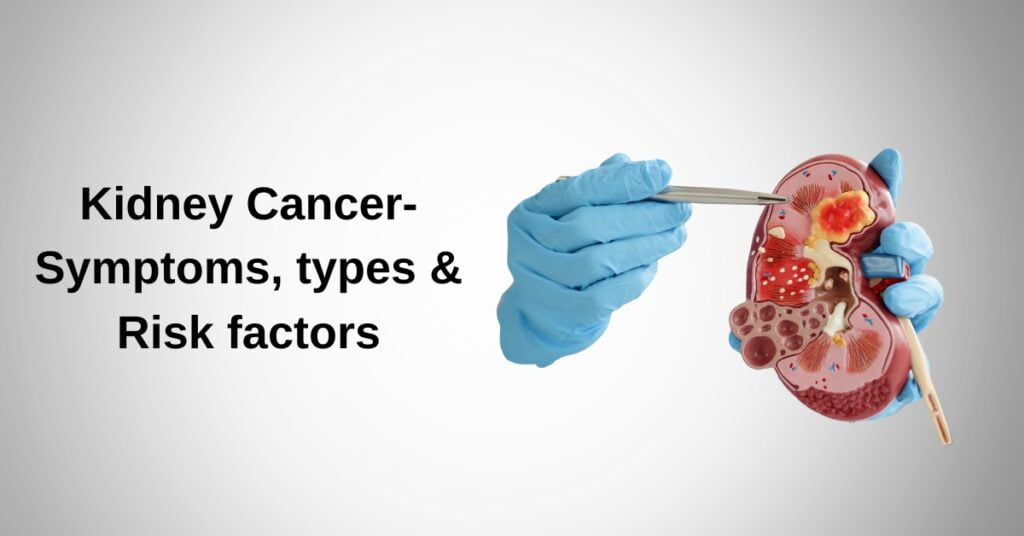
Kidney Cancer – Symptoms, Types and Risk factors What is Kidney Cancer? In the world of health, kidney cancer is a big concern, but it’s not always easy to understand. It happens when there’s abnormal cell growth in the kidneys, leading to tumors. These tumors can be cancerous or non-cancerous. They can spread if not treated early. We can detect it sooner now with advanced tools like CT scans. Let’s learn more about kidney cancer. Kidney cancer starts with abnormal cell growth in the kidneys, causing tumors. These tumors can be cancerous (bad) or non-cancerous (not as bad), and they can spread if not treated early. What are the types of kidney cancer? Renal Cell Carcinoma (RCC): This prevalent type constitutes about 90% of kidney cancer cases and mainly affects adults. Transitional Cell Carcinoma: Less common, it originates in the renal pelvis, ureters, or bladder. Wilms Tumor: Mostly found in children, comprising a small percentage of kidney cancers. Renal Sarcoma: Rare, it begins in the connective tissues of the kidney. What are the stages of kidney cancer? The prognosis depends on one’s general health, as well as the grade and stage of the kidney cancer. Below mentioned are the stages of kidney cancer. The higher the stage, the more advanced the cancer. Stage I: At this stage, the tumor is relatively small, measuring 7 centimeters or less, and it remains localized within the kidney. Stage II: The tumor has grown larger than 7 centimeters, but it still hasn’t ventured beyond the confines of the kidney. Stage III: This is where things start to get serious. The tumor has infiltrated nearby lymph nodes or blood vessels, or it may have penetrated the fatty tissue surrounding the kidney. However, it hasn’t breached the adrenal gland or surpassed Gerota’s fascia. Stage IV: Unfortunately, the cancer has now spread beyond the kidney’s boundaries. It could have invaded neighboring lymph nodes or metastasized to other organs like the bowel, pancreas, or lungs. Additionally, it has broken through Gerota’s fascia, possibly even involving the adrenal gland. Tough times indeed. What are the symptoms of kidney cancer? Recognizing the signs of kidney cancer is vital for early detection and treatment: Blood in urine (hematuria) Persistent back or side pain Fatigue Unexplained weight loss Fever Abdominal lump Related: Kidney Cancer Treatment and Diagnosis What are the risk factors of kidney cancer? Some factors can increase the chances of kidney cancer such as: Smoking: Tobacco use, including smoking, is a significant risk factor for kidney cancer, with smokers being at higher risk compared to non-smokers. Obesity: Being overweight or obese is associated with an elevated risk of kidney cancer, possibly due to hormonal changes and increased inflammation. Family History: Individuals with a family history of kidney cancer, especially among first-degree relatives, have a higher likelihood of developing the disease themselves. High Blood Pressure: Hypertension, or high blood pressure, is linked to an increased risk of kidney cancer, although the exact mechanism is not fully understood. Workplace Exposure: Exposure to certain chemicals in industries such as mining, welding, and farming may heighten the risk of developing kidney cancer. Can kidney cancer be prevented? Reducing the risk of kidney cancer involves comprehensive lifestyle adjustments: Quit Smoking: Tobacco cessation is crucial in lowering the risk of kidney cancer, as smoking is a leading risk factor for the disease. Maintain Healthy Weight: Following a balanced diet and engaging in regular physical activity can help prevent obesity, a known risk factor for kidney cancer. Control High Blood Pressure: Monitoring blood pressure regularly and adopting a healthy lifestyle can help manage hypertension and reduce the risk of kidney cancer. Stay Hydrated: Drinking an adequate amount of water daily supports kidney health and may reduce the risk of kidney cancer. Limit Exposure to Toxins: Minimizing exposure to environmental toxins and chemicals, especially in the workplace, can lower the risk of developing kidney cancer. Eat a Balanced Diet: Consuming a diet rich in fruits, vegetables, and whole grains while limiting processed foods and unhealthy fats can contribute to overall health and reduce cancer risk. Stay Active: Regular exercise not only helps maintain a healthy weight but also supports overall well-being, including kidney function, thereby reducing the risk of kidney cancer. In summary, dealing with kidney cancer is tough, but if we work together to understand it better, we can fight it effectively. By raising awareness, gaining knowledge, and acting quickly, we can lower the chances of getting it and catch it early if it does happen. With advancements in medical science and a commitment to healthier lifestyles, there is optimism for improved outcomes and enhanced quality of life for kidney cancer patients. By fostering awareness and sharing knowledge, we unite in the battle against kidney cancer, paving the way for brighter and healthier tomorrows. References: https://www.webmd.com/cancer/understanding-kidney-cancer https://www.cancer.org.au/cancer-information/types-of-cancer/kidney https://my.clevelandclinic.org/health/diseases/9409-kidney-cancer https://www.sciencedirect.com/topics/ https://www.mayoclinic.org/diseases-conditions/kidney-cancer https://www.cancer.org/cancer/types/kidney-cancer Dr. A. Venugopal Clinical Director & HOD, Senior Consultant Medical Oncologist and Hemato Oncologist View Profile About Author Dr. A. Venugopal MD (General Medicine), DM (Medical Oncology), MRCP – SCE Medical Oncology (UK), ECMO (Switzerland). Dr A. Venugopal is One of the best medical oncologist and Hemato Oncologist in hyderabad, currently serving as the Head of the Department and Senior Medical Oncologist, Hemato Oncologist at Pi Health Cancer Hospital in Gachibowli, Hyderabad. He brings over 15 years of extensive experience in the field of Oncology. Book an Appointment
